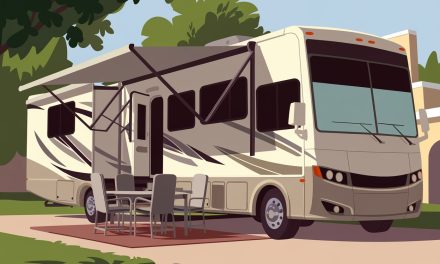Would you like to save this article?
Introduction
You’ve probably seen the Instagram photos of stunning sunsets from RV windows and thought, “That’s the life for me!” But what those pictures don’t show you is the reality behind the wanderlust lifestyle that’s causing millions of RVers to quit every year.
With 11.2 million households currently owning RVs across America, you might think the lifestyle is nothing but smooth sailing. Think again. The truth is, for every dreamy campfire photo, there’s a frustrated RVer dealing with expensive breakdowns, health challenges, and the harsh realities of life on the road. Understanding these seven major reasons why people are abandoning their RV dreams could save you thousands of dollars and months of heartache before you take the plunge.
1. Health Challenges Turn Dream Adventures Into Medical Nightmares
When you’re constantly on the move, finding quality healthcare becomes a full-time job. You’ll discover that your trusted family doctor is now hundreds of miles away, and your insurance might not work with providers in every state you visit.
The physical demands of RV life hit harder than most people expect. Setting up camp, hitching trailers, and driving for hours takes a serious toll on your body. If you already deal with back pain or arthritis, you’ll find yourself struggling with tasks that seemed simple in your driveway.
Your furry family members add another layer of complexity. Finding trustworthy veterinarians in every new location becomes an expensive treasure hunt that never ends.
| Health Challenge | Impact Level | Average Additional Cost |
|---|---|---|
| Finding New Doctors | High | $200-500 per visit |
| Physical Strain | Medium-High | $300-800 (therapy/treatment) |
| Pet Care | Medium | $150-400 per vet visit |
You Know What They Say About Medical Bills on Wheels
You thought regular medical bills were scary? Wait until you’re trying to find an emergency room in the middle of nowhere while towing a 30-foot trailer. Your GPS will probably lead you to a abandoned gas station, and your insurance company will act like you’re asking them to pay for a vacation to Mars.
2. Time Poverty: When “Vacation Time” Becomes a Cruel Joke
Here’s the brutal math: most Americans get 3-4 weeks of vacation time per year. When you’re driving everywhere and spending half your time setting up camp, that’s barely enough time to leave your home state, let alone see the country.
Remote work sounds dreamy until you’re desperately searching for cell service on a mountain top, missing important meetings because your “mobile office” doesn’t have Wi-Fi. You’ll find yourself working twice as hard to maintain the same productivity levels.
Even retired folks discover that RV life becomes a second job. Between trip planning, maintenance, and constant problem-solving, your golden years start feeling more like overtime hours.
Time Management Becomes Time Mismanagement
You’ll spend more time researching campgrounds and dump stations than actually enjoying the scenery. By the time you figure out where to park legally, your “spontaneous adventure” has turned into a military operation that would make a Pentagon planner weep.
3. Space Wars: When Tiny Living Becomes Tiny Problems
The novelty of tiny living wears off faster than cheap RV paint. What seemed cozy during your weekend test drive becomes claustrophobic when you’re living it 24/7.
Storage becomes a Tetris game from hell. Under-bed compartments fill up instantly, and forget about seasonal clothes – you’ll be wearing the same three outfits until you break down and rent a storage unit, adding another monthly expense to your shrinking budget.
Privacy becomes extinct. There’s no escaping to another room when tensions rise, and finding quiet space for work calls becomes impossible when your “office” is also the kitchen, bedroom, and entertainment center.
| Space Challenge | Typical RV Size | Reality Check |
|---|---|---|
| Storage | 100-400 sq ft | 75% less than home |
| Privacy | 0-2 separate rooms | Minimal to none |
| Workspace | Dinette table | Shared with all activities |
Welcome to the World’s Most Expensive Sardine Can
You’ll discover that sharing 200 square feet with your spouse is like being trapped in an elevator that never reaches your floor. The person you’ve loved for decades suddenly becomes incredibly annoying when they’re always within arm’s reach and you can hear them chewing their cereal from the “bedroom.”
4. Quality Control Catastrophes: When Your Dream Machine Becomes a Money Pit
RV quality has hit rock bottom, and you’re about to find out why. The infamous “COVID camper” phenomenon left thousands of RVers with units built by inexperienced workers during supply shortages, creating rolling disasters that make lemons look reliable.
Frame flex issues have plagued major manufacturers, with class-action lawsuits alleging that companies knowingly shipped defective units while denying warranty claims. You’re not just buying transportation – you’re gambling with your life savings.
Misaligned walls, faulty electrical systems, and plumbing nightmares have become standard features rather than occasional problems. The phrase “they don’t make them like they used to” has never been more tragically accurate.
Your RV Warranty Is Basically Toilet Paper
You’ll learn that RV warranties are written by lawyers who apparently hate RV owners. Every problem will somehow be “user error,” “normal wear and tear,” or “not covered under warranty.” The fine print has more holes than Swiss cheese, and customer service will treat you like you’re asking for free money.
5. Burnout Boulevard: When Adventure Becomes Exhaustion
The constant decision-making will drain your mental battery faster than running your AC all night. Where to go next, where to stay, how long to visit, checking bridge heights, finding cell service – your brain never gets a vacation even when you’re supposedly on one.
Setup and teardown become Groundhog Day on steroids. You’ll perfect the art of hooking up utilities only to tear it all down and do it again 200 miles later. The excitement of new destinations gets overshadowed by the exhausting logistics of getting there.
Social isolation hits harder than expected. While RV parks offer some community, being constantly away from family and lifelong friends creates a loneliness that scenic views can’t cure. Video calls help, but they can’t replace physical presence during important moments.
You’ll Master the Art of Fake Enthusiasm
You’ll become an expert at pretending you’re having fun while secretly googling “houses for sale” in your hometown. Social media posts will show nothing but smiles and sunsets while you’re crying into your instant coffee because your RV’s air conditioner died in Death Valley and the nearest repair shop is booking appointments for next month.
6. Maintenance Madness: Your RV Becomes a Full-Time Job
Your house is traveling 65 mph while getting beaten up by roads that would challenge a military vehicle. Everything breaks more often and more expensively than in a stationary home.
Average maintenance costs range from $1,000-$5,000+ annually, not including major repairs. Wheel bearings need repacking yearly, tires age out before wearing out, and batteries require constant attention regardless of how little you travel.
RV technicians are rarer than unicorns, with wait times extending weeks or months. You’ll find yourself stranded without air conditioning in summer or heat in winter while parts are backordered and repair shops are booked solid.
DIY maintenance becomes mandatory unless you enjoy bankruptcy court. You’ll learn plumbing, electrical work, and mechanical repairs whether you want to or not, because the alternative is financial ruin.
| Common Repair | Average Cost | Wait Time |
|---|---|---|
| Water Pump Failure | $200-250+ | 1-3 weeks |
| AC Repair | $300-800+ | 2-6 weeks |
| Wheel Bearing Service | $150-400+ | 1-2 weeks |
| Frame Issues | $5,000-20,000+ | 2-6 months |
Congratulations, You’re Now an Unpaid RV Technician
You’ll become more familiar with your RV’s underbelly than a mechanic who’s worked on it for 20 years. YouTube University will become your second home as you desperately search for tutorials on “why my toilet won’t stop gurgling” at 2 AM in a Walmart parking lot.
7. Financial Reality Check: The Money Drain That Never Stops
The costs never end. Beyond the initial purchase price, you’ll face insurance, registration, storage, fuel, campground fees, propane, and endless accessories that somehow become “necessities.”
Part-timers get hit hardest financially because they can’t justify year-round expenses for something used only weeks per year. Storage costs alone can run $100-300+ monthly when you’re not using your rig.
Operating expenses include fuel for your tow vehicle (often getting 8-12 mpg while towing), campground fees averaging $30-80+ nightly, propane refills, and dump station fees that add up faster than you’d think.
The hidden costs multiply like rabbits: extended warranties that don’t cover anything important, emergency hotel stays during repairs, eating out more because RV cooking gets old, and replacement items that break constantly.
| Cost Category | Annual Range | Hidden Extras |
|---|---|---|
| Maintenance/Repairs | $1,000-7,000+ | Emergency hotel stays |
| Operating Costs | $5,000-15,000+ | Fuel, fees, food |
| Storage/Insurance | $1,200-4,000+ | Registration, inspections |
Your Bank Account Will Go on a Diet
You’ll discover that RV budgets are like diet plans – they look great on paper but fall apart when confronted with reality. Every campground will find creative ways to charge you extra fees, and your RV will develop expensive problems with the timing of a Swiss watch programmed by Murphy’s Law.
The Bottom Line: Know Before You Go
Despite these challenges, millions of people still love RV life. The key is going in with realistic expectations rather than Instagram fantasies. Consider starting with shorter trips and rentals before making major investments.
Test your tolerance for small spaces, mechanical problems, and constant decision-making. If you’re retired or have health issues, factor in the physical demands and healthcare access challenges.
Most importantly, have an exit strategy. Many successful RVers eventually transition to part-time use or sell their rigs when life circumstances change, and that’s perfectly okay.
SOURCES
- RV Tips & Travels YouTube Channel – “7 Reasons People Quit RV Life”
- Progressive Insurance – RV Living Trends
- RVIA – Bringing Former RV Owners Back
- RV Lifestyle – Why People Quit RV Life
- ConsumerAffairs – RV Ownership Statistics 2025
- John Marucci – Real Cost of RV Ownership Analysis
- RV Love – Real RV Ownership Costs
- Outdoorsy – RV Living Costs Guide
- Bish’s RV – Hidden Costs of RV Ownership





